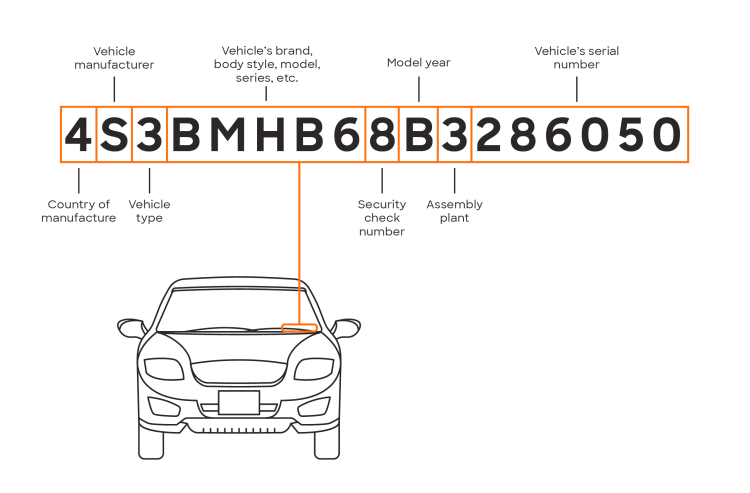Every car has its own unique vehicle identification number, or VIN, that identifies key details about it. Contained in the 17 digits of your car’s VIN is key information about your vehicle’s make, model, and year. Your VIN even tells you where your car was manufactured.
It should be fairly easy to find your VIN, it’s printed on the car itself and on important It should be fairly easy to find your VIN. It’s printed on the car itself and on important documents, like your car’s title, your car insurance policy, and any police reports about your car.
Explore related topics
How to read a vehicle identification number
The 17-digit VIN code has been standardized since 1981, so all cars built since have VINs that are structured the same way (motorcycles and ATVs also have VINs). A VIN is composed of both numbers and letters.
The first digits of your VIN identify your car’s manufacturer. The following digits describe your vehicle, including its make, model, trim level, the year it was built, details about its engine, its assembly plant, and its serial number.
Here are what all the parts the VIN number mean, in order of appearance:
The first digit, which is 4 in our sample VIN, tells you the car's country of manufacture
The second digit, S in the sample VIN, is the car's manufacturer
The third digit in the VIN, 3, tells you the car's vehicle type
That's followed by a series of five digits, BMHB6 in our sample VIN, that tell you a car's brand, body style, model, series, etc.
The next digit, 8 in our sample VIN, is its security check number
That's followed by the letter B, which tells you a car's model year
The eleventh digit of the VIN, 3, tells you the car's assembly plant
The last six digits of our sample VIN, 286050, make up the car's serial number
Where do I find my VIN?
If you aren’t sure where to find your VIN, there are several places to check on your vehicle:
In most car's the VIN will be printed on the driver’s side of the dashboard, close to where the dash meets your windshield.
If you don't see it on the dash, check the driver’s side door jamb, where there should be a sticker with information about your car, including the VIN.
Other places to look for your VIN on your vehicle are in front of the engine block, and occasionally in the trunk.
Your VIN number will also be on many documents relevant to your car, including your car’s title certificate. A car’s title is a legal document, issued by your state’s DMV, that states who owns the vehicle. Your VIN will also be listed on your auto insurance policy, and in any police reports that reference your vehicle.
When do you need your VIN?
There are a number of occasions when your VIN comes in handy. If your car is ever stolen, its VIN can be used to identify it and recover your car or its parts. When you take your car into an auto body shop for repairs, they may use your car’s VIN to help determine what specific parts it needs.
Your VIN is also crucial if there’s ever a recall of your type of vehicle — the VIN is what tells you if your car is affected by the recall or not. You’ll also need it when you’re making claims on your car warranty.
And if you’re buying a used car, you can use the car’s VIN to learn more about it before you make a purchase — running a VIN check on a car before you buy it can help you find its accident history, past owners, and liens and any recalls.
→ Learn more about buying a used car
How to look up a VIN number for free
You can enter your vehicle identification number into an online VIN decoder to get access to a car’s information. The National Highway Traffic Safety Administration (NHTSA), which enforces vehicle performance standards, offers a free VIN lookup tool.
Simply plug your VIN into the NHTSA’s tool to access your vehicle’s manufacturer, model year, serial number, and more.

